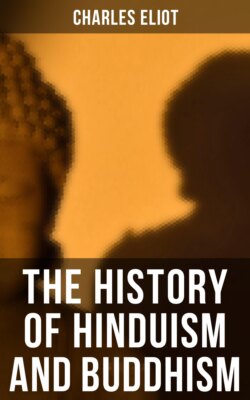Читать книгу The History of Hinduism and Buddhism - Charles Eliot - Страница 60
На сайте Литреса книга снята с продажи.
BOOK III PALI BUDDHISM
ОглавлениеTable of Contents
In the previous book I have treated chiefly the general characteristics of Indian religion. They persist in its later phases but great changes and additions are made. In the present book I propose to speak about the life and teaching of the Buddha which even hostile critics must admit to be a turning point in the history of Indian thought and institutions, and about the earliest forms of Buddhism. For twelve centuries or more after the death of this great genius Indian religion flows in two parallel streams, Buddhist and Brahmanic, which subsequently unite, Buddhism colouring the whole river but ceasing within India itself to have any important manifestations distinct from Brahmanism.
In a general survey it is hardly possible to follow the order of strict chronology until comparatively modern times. We cannot, for instance, give a sketch of Indian thought in the first century B.C., simply because our data do not permit us to assign certain sects and books to that period rather than to the hundred years which preceded or followed it. But we can follow with moderate accuracy the two streams of thought in their respective courses. I have wondered if I should not take Hinduism first. Its development from ancient Brahmanism is continuous and Buddhism is merely an episode in it, though a lengthy one. But many as are the lacunæ in the history of Buddhism, it offers more data and documents than the history of Hinduism. We know more about the views of Asoka for instance than about those of Candragupta Maurya. I shall therefore deal first with Buddhism and then with Hinduism, while regretting that a parallel and synoptic treatment is impracticable.
The eight chapters of this book deal mainly with Pali Buddhism[293]--a convenient and non-controversial term—and not with the Mahayana, though they note the tendencies which found expression in it. In the first chapter I treat of the Buddha's life: in the second I venture to compare him with other great religious teachers: in the third I consider his doctrine as expounded in the Pali Tripitaka and in the fourth the order of mendicants which he founded. The nature and value of the Pali Canon form the subject of the fifth chapter and the sixth is occupied with the great Emperor Asoka whose name is the clearest landmark in the early history of Buddhism, and indeed of India.
The seventh and eighth chapters discuss topics which belong to Hinduism as well as to Buddhism, namely, meditation and mythology. The latter is anterior to Buddhism and it is only in a special sense that it can be called an addition or accretion. Indian thought makes clearings in the jungle of mythology, which become obliterated or diminished as the jungle grows over them again. Buddhism was the most thorough of such clearings, yet it was invaded more rapidly and completely than any other. The Vedânta and Sânkhya are really, if less obviously, similar clearings. They raise no objection to popular divinities but such divinities do not come within the scope of religious philosophy as they understand it.
